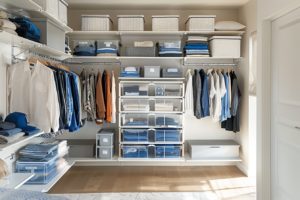Intermittent fasting is a dietary practice that is increasingly adopted for its many potential health and well-being benefits. But to get the most out of it, a balanced diet during meal periods is essential. Discover qualitative recommendations for optimal synergy between intermittent fasting and nutrition.
Understanding Intermittent Fasting and its Benefits
Before diving into dietary advice, it’s worth clarifying what intermittent fasting is. This method involves alternating cycles of fasting and food intake. Popular forms include 16:8 (fast for 16 hours, eat during an 8-hour window) and 5:2 (eat normally 5 days per week and limit calorie intake for 2 days).
Adherents of intermittent fasting often report weight loss, improved metabolic health, increased energy, and improved focus. However, these benefits depend greatly on the food choices made during meal periods.
Diet and Intermittent Fasting: The Winning Equation
Prioritize Essential Nutrients
When time is running out, choosing foods rich in nutrients is essential. Choose fresh vegetables and fruits, sources of vitamins, minerals and fiber. Lean proteins such as chicken, turkey, fish or legumes are also recommended for their satiating effects and their role in preserving muscle mass. Good fats, for example from avocado, nuts or olive oil, are also essential for proper brain function and heart health.
Integrate Low Glycemic Index Foods
Choose foods with a low glycemic index (GI) to avoid blood sugar peaks, which can cause cravings during the day. Green vegetables, whole grains or sweet potatoes are examples. Maintaining stable blood sugar levels is a key to the success of intermittent fasting.
Vary Protein Sources
It is recommended to alternate protein sources between animal and plant-based. This will allow you to benefit from a broad spectrum of amino acids while bringing variety to your meals. Eggs, tofu, seitan, Greek yogurt or fresh cheese are valuable additions to your menus.
Respect Natural Saturation
During eating windows, it is tempting to eat in large quantities to “compensate” for the fasting period. However, listening to yourself and respecting your feeling of satiety is critical to avoiding overconsumption of calories. Learning to eat mindfully is a valuable skill for anyone practicing intermittent fasting.
Hydration: A Pillar of Fasting
Hydration should not be neglected. Drinking plenty of water, consuming herbal teas or low-calorie vegetable broths can help maintain hydration without breaking the fast. Water plays a role in controlling hunger, digestion and maintaining focus and energy.
Finding the Right Complementarities
Balancing macronutrients – protein, carbohydrates and fat – is crucial for a complete diet. An ideal dish might combine a lean protein source, a serving of complex carbohydrates, and unlimited green vegetables with a small amount of quality fat for a good nutritional balance.
Anticipate Healthy Meals and Snacks
To avoid hasty or poor nutritional quality food choices, plan your meals in advance. When feeling peckish, opt for healthy snacks like nuts, fresh fruit or vegetables with hummus.
Example of Balanced Menus during Intermittent Fasting
Here is an example of a menu that could fit into an intermittent fasting practice:
- Breakfast (if within your eating window): Oat porridge with red fruits, a drizzle of nut butter and chia seeds.
- Lunch: Green salad composed with grilled chicken or chickpeas, quinoa, avocado and olive oil vinaigrette.
- Snack: A handful of almonds and an apple.
- Dinner: Baked salmon with roasted asparagus and sweet potatoes.
The Notion of Flexibility
Staying flexible is essential. Rigor can be restrictive and counterproductive. Allow yourself occasional deviations to maintain long-term enjoyment and engagement.
Self-listening and Adaptation
Each individual being unique, listening to your body is essential to adjust your diet and fasting habits if necessary.
Intermittent fasting combined with a balanced diet can be a great way to achieve your health goals. By following these tips, we can not only optimize this practice but also make it a pleasant experience and a source of daily benefits.













